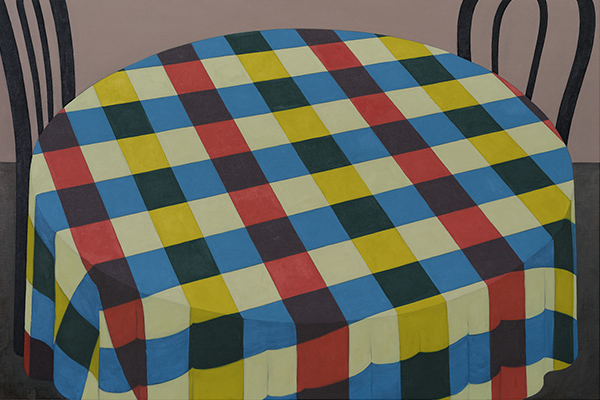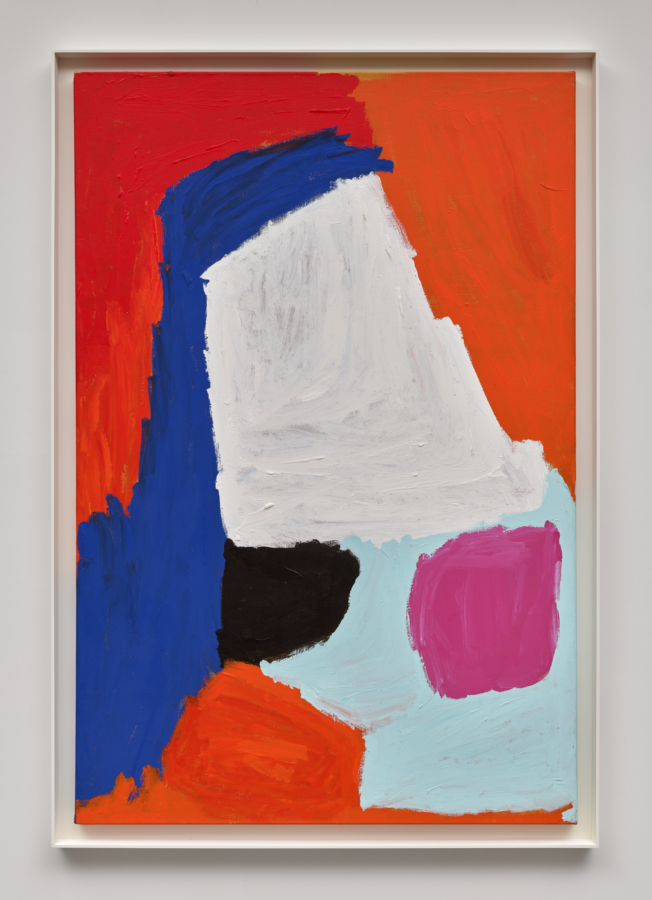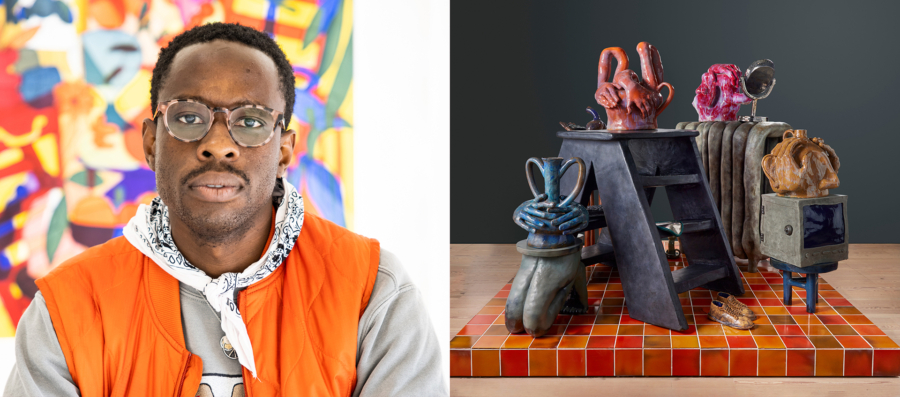2022
Time Life, Karma, New York, 2022
Over the past decade Mungo Thomson has worked on a project titled Time Life; it consists of seven high-resolution stop-motion videos, roughly two to twelve minutes in length, that he calls Volumes. A “volume,” the dictionary tells us, is either a single book of printed sheets or a book that is part of a series; the word, which stems from the late Middle English for a parchment of writing, is rooted in the Latin volvere, “to roll.” Time Life plays on a few senses of this term (including “volume” as in level of sound). Each of the videos rolls through a great number of related images and texts, all taken from books that Thomson has photographed painstakingly, page by page. To produce each Volume Thomson mounted a Canon 5D camera on a copy stand (its white bars on a black ground sometimes appear) and attached it to a Mac loaded with Dragonframe stop-motion software. The resulting animations are then played at breakneck speed (five at eight frames per second and two at even faster pace), accompanied by mostly percussive music, both curated and commissioned, that underscores the jerky rapidity of the editing. In five of the Volumes Thomson synced the images to the music, while in the other two a score was composed for a finished cut.
For the first four Volumes—Foods of the World, Animal Locomotion, Flowers (Nahbild), and 1000 Questions—Thomson selected from the Time-Life series of books published from 1961 to 2003. This famous project utilized the vast archives of the two eponymous magazines to construct instructional guides on a host of topics from cooking and craft to technology, science, and history. According to Thomson, one tagline for these volumes was “Become an Instant Expert,” they are now often used in homeschooling, and the series as a whole suggests an “analog prototype for the Internet” (the publications declined as the web became dominant). With his format established, Thomson turned to other sources and subjects for his final three Volumes—Sideways Thought, The Working End, and Color Guide.
Foods of the World draws on four Time-Life series of cookbooks, some of which explore international cuisine. Countless pages of cooking and baking flash by, switching between image and text and vertical and horizontal orientations, all set to a soundtrack involving chimes, castanets, drums, and bells. Ironically, given the rampant appropriation at work, Thomson centers the copyright symbol for the first half-minute or so, but exactly what might count as pirated information is unclear, for the sequences taken from the books are too interrupted, too many pages are cropped, and the images and texts pass by too quickly for any instruction to occur, and this holds for the other Volumes as well. Although some of the Volumes are based on teaching guides, they are almost the opposite of how-to videos: we couldn’t learn these techniques if we tried.
Flowers (Nahbild) is a flurry of floral images, both photographed and painted, some with text, most on the horizontal axis, and all accompanied by a drum roll that varies in speed and volume; this video might qualify as a still life if it weren’t the opposite of still. Here the subject of the source books is gardening, but again little of this activity is conveyed, and even less of botany. Close-up shots alternate with framed ones, abstract images with hyperrealist ones (Nahbild, the title of the soundtrack and the subtitle of this Volume, literally means “near image”), and as petals and pistils turn into pixels and vice versa, we are left to contemplate (if that’s the word) the relation between the organic and the electronic, the analog and the digital. What is color in nature and what is color in culture? Or has the difference between the two—which the genre of the still life long reflected on—become vanishingly small?
While Flowers sometimes evokes all-over painting, Color Guide continually calls up the old avant-garde paradigm of the monochrome. This Volume was made from a single 2021 Pantone Color Formula Guide photographed at eight swatches of color per second and sequenced as in the book, front to back. Matched with synthesizer music of a high tone combined with a low pulse like a heartbeat, no less than 2,161 colors appear in its four and a half minutes of running time. Each page of the guide has seven swatches of one color ranging in value from dark to light, Thomson tells us, and “the pulsing in the video is the rhythm as each page reaches its brightest color.” Otherwise there is no evident order to the mostly yellow, red, green, and blue screens that pass by. The soundtrack is the most visceral of all the Volumes, even as the images are the most retinal. This is one tension; another tension emerges between the chroma on the printed page and the color in the digital video. At times we might confuse the craquelure of the paper (which also evokes that of canvas and skin) with the pixilation of the screen. What exactly is the fundamental ground or support here—paper, photograph, video, or a combination of all three—or is the question of medium-specificity rendered moot?
With Sideways Thought Thomson turns from monochromes to sculptures, Rodin’s in particular; in this fifth Volume he also breaks from his Time-Life source materials, pulling some 4,000 pages from over fifty books on the artist. Thomson organized his images in stacks in such a way that, once videoed, they produce a clockwise rotation of each sculpture, a circling that seems driven by the pulsating score (the “roll” in this Volume is especially intense). In modern aesthetics from Diderot to Greenberg, sculpture was often deemed defective because it is not as instantaneous as painting, given that we need time to circumambulate it in order to take it in. In Sideways Thought sculpture strikes back against this old bias with a big assist from photography and video. At the same time this Volume produces a tension of its own between the immateriality of the images and the materiality of the sculptures. More than any predecessor, Rodin stressed not only the tactility of the medium but also the touch of the artist inscribed in clay, plaster, and bronze. The way that his expressive fragments register his own subjectivity was taken to be the source of his great originality. However, this modernist value of uniqueness is undercut by how often his sculptural elements are repeated in different ensembles, an operation that this Volume also reveals. Thus in his work the singular artwork confronts its historical antagonist, the industrial copy, and this artisanal/industrial tension in Rodin is doubled by the photographic/digital tension in Sideways Thought.
Animal Locomotion also implicitly juxtaposes a postindustrial present with an industrial past. Here the source materials are Time-Life books devoted to exercise and sport—from stretching and massaging to jogging and running, from calisthenics, weightlifting, and martial arts to swimming, rowing, and biking—and the images are set to a computer score that mimics chimes and pipes. The title calls up the first experiments in time-motion studies undertaken in the late nineteenth century by Eadweard Muybridge and Étienne-Jules Marey, who devised two versions of chronophotography that were adapted in turn not only by modernists like the Futurists but also by engineers who developed “the scientific management” of labor, first in the factory (Frederick Taylor) and then in the home (Frank and Lillian Gilbreth). With the consumerist stage of postwar capitalism, this technical disciplining of the productive body penetrated leisure activities as well—hence the fitness and sports industries represented in the images here. “Animal Locomotion,” this Volume suggests, remains a booming business in which we are producer, product, and consumer in one.
The Working End also features instructional manuals, here for the tying of knots (“the working end” is the end of the rope advanced through a knot). Once an essential skill in maritime economies, knot-tying is now mostly a hobby; in fact, about half of the knots in this Volume are decorative, made for their own sake. Again, as though driven by the rapid drum roll of the score, the images of The Working End come too fast, and too many steps are dropped out, for any instruction to occur. Thomson invokes the transmission of technique, only to thwart it, and many knots end up untied or tangled. Here “the working end” doesn’t really work.
While The Working End promises skill only to foil it, 1000 Questions does the same with knowledge. Drawn from another Time-Life multivolume set, Why’s, What’s, and How’s of all sorts roll by in just over two minutes, too rapidly for us to offer any answers (even if we had them), and the music, which recalls a wind tunnel, underscores the rush. This Volume occupies a middle ground between the epistemophilic inquiries of the child (“Where do butterflies go when it rains?”) and the countless searches that occur on Google every day. The Time-Life books assumed a relatively stable nature and a mostly progressive culture: the series believed that the universe can be known, and that humanity will continue to know more and better. But this is in tension with the vicissitudes of technology (which figures prominently in 1000 Questions) and the fact that the world will never be transparent to us (this Volume could be titled after the recent novel by Benjamin Labatut, When We Cease to Understand the World). In fact, if put in a loop, 1000 Questions might be experienced as more torture than test.
As I watch the seven Volumes of Time Life, my own questions revolve around matters of medium, instruction, process, and archive. There are several mediums in play here: books, photographs, video, software programs, and music. Thomson displays most openly, as though to answer, almost incidentally, the old modernist call “to bare the device” (we see fluttering pages, wire bindings, copy stands, levels, tape, Post-its, and so on). Yet, again, what emerges is not any medium-specificity that grounds us in a single practice, but rather an intermediality that allows us to consider the hybridity of our media ecology at large. “This is not a just image,” Jean-Luc Godard remarks in Vent d’est (1970), “it is just an image,” but this comment was made at a time when the critique of the truth-value of representation was still urgent. Now, for good and for bad, such suspicion is almost automatic, and in any case Thomson presents such a surfeit of images that the question of just representation hardly occurs. Moreover, that surplus explodes the usual categories of how images come to us—as singular, sequential, and serial—and indeed the Volumes manifest neither the montage of cinema nor the flow of television. During the media explosion of the postwar period Marshall McLuhan held that each new medium aims to absorb the previous one (his example was television vis-à-vis radio), and during the media explosion at the turn of the millennium Lev Manovich argued that the computer and Internet did much the same with television and film. They were more techno-optimistic than Thomson is now; at times the implication of the Volumes is that each new medium all but destroys the ones before it. (Certainly the making of the videos necessitated the destruction of most of the source books.)
For Thomson the old Time-Life books were also optimistic in outlook; certainly they were pledged to self-improvement. But then instructional guides are never simple, let alone innocent: consciously or not, they also work to discipline bodies and minds. Recall how time-motion studies led to the regimentation of labor, and how, in our own time, training in exercise, say, easily slips into a regime of drilling (not to mention consuming). The Volumes underscore the world of rampant testing in which we live. The copy stand sometimes looks like a target, and the rapid-fire images and texts often feel like a kind of drilling too. At the same time, the Volumes subvert both instruction and discipline. Again, like flash cards that go by too fast, the images and texts cannot be processed, and the given sequences are broken up in such a way that we cannot learn the very activities that the source books are made to inculcate. For Walter Benjamin the prime function of cinematic montage was to teach us how to absorb the shocks of modern industrial life. In a related way the Volumes might help us to weather the informational storm of contemporary Internet existence. Yet they also push back against its drives to dematerialize and disembody: along with the percussive music, the frenetic editing makes the Volumes physical—corporeal—in a way that resensitizes us rather than the opposite.
One way to understand Thomson’s Volumes is to relate them to what film scholar Salomé Aguilera Skvirsky has termed “the process genre,” that is, “processual representation in which the important steps in a process are shown in chronological order.” The landmarks of this genre include some of the formats already mentioned here: chronophotography and time-motion studies, industrial and ethnographic films, educational and tutorial programs on television, and countless how-to videos on the web. For Skvirsky, processual representation is best served by film because of its “constitutive capacity to visually and analytically decompose movement and to curate its recomposition.” This is where Thomson intervenes in the genre: certainly he decomposes and recomposes movement, but hardly so as “to display the successive steps or phases of a process.” In this way the main purpose of process demonstrations—to “bring out the skilled character of technical processes”—is undercut. If the process genre comprises an “aesthetic of labor” for Skvirsky, we might see the Volumes as an aesthetic of anti-discipline. And if the process genre is concerned above all to provide knowledge and to effect fascination, as Skvirsky also argues, the Volumes interrupt both: there is no continuous process to enlighten and absorb us, no completed product to delight and reward us. If we are instructed, it is, paradoxically, in how-not-to.
This how-not-to aspect is also a function of the out-of-date status of the source materials. The Time-Life books are artifacts of the second half of the twentieth century; the Volumes thus cannot help but register changes not only in techniques but also in styles since that time: clothing, equipment, even people appear outmoded. What were these activities? Who were these creatures? The 1,001st question might be: Where do image, text, and information go—where do humans go—when they are superseded or otherwise lost in time? Where but that amorphous nonplace we call, too loosely, “the archive”? This is how Thomson sees his project: as a mimesis of how “reference encyclopedias, photo books, how-to guides and production manuals” are “scanned by a high-speed robotic book scanner, the type used by universities and tech companies to archive libraries.” In this automated process, even as the books are “saved,” they are also often destroyed, “literally dematerialized in order to become data for the Internet.” Even more problematically, they are less preserved than put in deep freeze (literally so: servers must be kept at extremely low temperatures). It is as though to record today were also to stash away forever, that is, to forget (Plato already feared as much about writing). And, indeed, for whom or what is all this information on the various iterations of the Internet to be “saved”? Might it be archived less for us than for whomever or whatever comes after us? Here the title Time Life takes on an uncanny valence: human knowledge and activity contained in a vast time capsule–cum–trash bin lost in space.
Yet Thomson also intervenes crucially at this point: in his mimicking of the automated operations of scanners and servers, he also parodies them with old-fashioned human actions of framing, shooting, and editing. He even returns the digital to its original sense of the finger, redeploying ancient skills of eye-hand-and-mind coordination along with new forms of technical composition, and so interrupts machine vision before it becomes the rule. He intercepts techniques of the human body and psyche and delivers them for our own still-human reflection.



